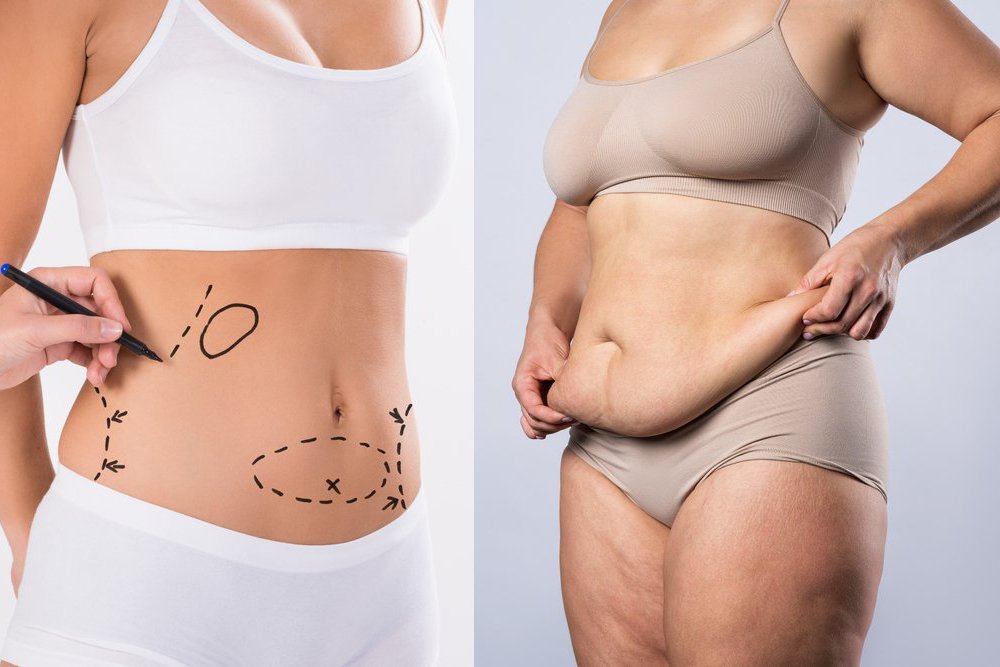
When considering body contouring procedures to address excess fat and loose skin in the abdominal area, many people in Dubai find themselves wondering which option is best for them: lipo abdominoplasty or a traditional tummy tuck. Both procedures aim to improve the appearance of the abdomen, but they differ in their approach and the results they offer. In this article, we’ll compare the two procedures to help you decide which one may be the right choice for your body goals.
Lipo abdominoplasty (عملية شفط الدهون من البطن)combines liposuction with abdominoplasty, offering a more comprehensive solution for individuals dealing with both excess fat and loose skin. In contrast, a traditional tummy tuck focuses primarily on removing excess skin and tightening the abdominal muscles, with less emphasis on fat removal. Understanding the key differences between these two procedures can help you make an informed decision.
What Is Lipo Abdominoplasty?
Lipo abdominoplasty is a hybrid procedure that combines liposuction and abdominoplasty to address both stubborn fat and loose skin. Liposuction is used to target excess fat, while abdominoplasty removes excess skin and tightens the abdominal muscles. This combination allows for more significant contouring, making it an ideal choice for patients who need both fat reduction and skin tightening. It is particularly effective for individuals who have experienced significant weight loss or pregnancy and are left with excess fat and skin around the midsection.
By addressing both fat and skin, lipo abdominoplasty provides a more dramatic transformation compared to a traditional tummy tuck, giving patients a more sculpted, toned abdomen.
What Is a Traditional Tummy Tuck?
A traditional tummy tuck, or abdominoplasty, focuses primarily on removing excess skin and tightening the abdominal muscles. It is ideal for individuals who have loose, sagging skin in the abdominal area, especially after pregnancy or significant weight loss. During this procedure, a surgeon will make an incision along the lower abdomen to remove excess skin, and the underlying muscles are then tightened to restore a flatter, firmer appearance.
While a tummy tuck can dramatically improve the contour of the abdomen by tightening the skin and muscles, it does not address excess fat. If you’re primarily concerned about loose skin, a traditional tummy tuck may be your best option.
Key Differences Between Lipo Abdominoplasty and Traditional Tummy Tuck:
One of the key differences between lipo abdominoplasty and a traditional tummy tuck is the fat removal aspect. Lipo abdominoplasty involves liposuction, which allows for targeted fat removal in addition to skin tightening. If you have localized fat deposits that don’t respond to diet and exercise, this procedure may be the most effective choice.
On the other hand, a traditional tummy tuck does not focus on fat removal. It is specifically designed to address issues related to skin laxity and muscle separation. If you’re primarily concerned about loose skin and have minimal fat, a tummy tuck may be more appropriate.
Which Procedure Is Right for You?
Deciding between lipo abdominoplasty and a traditional tummy tuck depends on your specific needs and goals. If you have both excess fat and loose skin around your abdomen, lipo abdominoplasty is likely the better choice. This procedure provides a more comprehensive solution, addressing both issues simultaneously and offering more dramatic results.
If your main concern is sagging skin, especially following pregnancy or significant weight loss, a traditional tummy tuck may be sufficient. It will provide a flatter, more youthful appearance by tightening the skin and muscles, without the need for fat removal.
Recovery Differences: Lipo Abdominoplasty vs. Traditional Tummy Tuck:
Both procedures require a recovery period, but the recovery process for lipo abdominoplasty may be slightly longer due to the combination of liposuction and tummy tuck techniques. Following the procedure, patients may experience swelling, bruising, and discomfort, particularly in the areas treated with liposuction. Compression garments will be required to support the healing process and reduce swelling.
A traditional tummy tuck typically involves a recovery period of several weeks, with restrictions on physical activity during the initial healing phase. Since there is no liposuction involved, patients may experience less swelling in the treated areas compared to those undergoing lipo abdominoplasty, but the abdominal muscles will still need time to heal.
Long-Term Results and Maintenance:
Both procedures offer long-lasting results, but the key to maintaining your results after either lipo abdominoplasty or a tummy tuck is a healthy lifestyle. Proper diet and exercise are essential to preventing the accumulation of excess fat, which could impact the appearance of your abdomen.
Lipo abdominoplasty tends to offer more dramatic contouring, as it not only removes excess skin but also targets stubborn fat. For individuals who maintain a healthy lifestyle, the results can be permanent. A traditional tummy tuck, while effective for skin tightening, may not provide the same level of fat removal and could require additional procedures down the line if new fat deposits accumulate.
Conclusion:
Ultimately, choosing between lipo abdominoplasty (عملية شفط الدهون من البطن)and a traditional tummy tuck comes down to your individual goals and the nature of the issues you wish to address. If you’re dealing with both excess fat and loose skin, lipo abdominoplasty offers a comprehensive solution. However, if your primary concern is loose, sagging skin and you have minimal fat, a traditional tummy tuck may be the right choice.
Consulting with a qualified surgeon in Dubai can help you determine which procedure is most suitable for your needs and aesthetic goals. With the right treatment plan, you can achieve a more sculpted, youthful-looking abdomen and enjoy long-lasting results.







